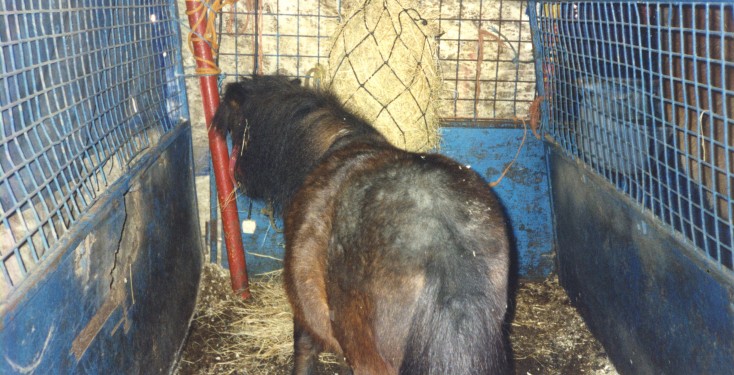Turning a blind eye to domestic violence?
There is an overwhelming case that ‘wild’ animals should be banned from circuses, but clearly ‘domestic’ species are not immune to suffering. The Animal Welfare Bill needs to protect these animals too.

This summer during our undercover investigation of circuses in Portugal, our findings once again confirmed that abuse of circus animals is not restricted to wild animals like elephants and tigers.
Brutal horse training sessions were filmed by an undercover ADI Field Officer, employed by Circo Soledad Cardinali. The footage shows Soledad Cardinali – Portugal’s answer to Mary Chipperfield – attempting to make a small pony walk on its hind legs by repeatedly whipping the poor animal all over its body. When the animal tries to escape it is whipped across the back, hauled back using a lunge rein and then whipped repeatedly.
The investigation also caught workers on film slapping and punching ponies and donkeys in the face and kicking them. This is the common circus industry culture we first exposed in 1997.
It is a myth that domestic animals do not suffer in circuses and our campaign aims to address this misconception so that they are protected in the forthcoming Animal Welfare Bill. Horses and ponies suffer the same confinement and deprivation in temporary, mobile accommodation as wild animals do. They too have basic needs for fresh air, freedom to move around, eat and drink at will. They also endure the same long periods shut inside transporters as all the other animals – effectively enduring journeys far longer than those permitted for livestock. The abnormal, stereotypic behaviours seen in wild animals with circuses have also been recorded in horses and ponies.
Whilst it might be argued that domesticated species are more amenable to training and control and their wild instincts have been bred out of them, this is of little relevance in the circus.
Our film and photographic evidence of the treatment of horses and ponies with circuses in the UK, supported by similar images from many other countries, shows:
- Horses and ponies performing abnormal, stereotypic behaviours;
- Ponies kept on transporters for up to 26 hours when actual journey times are only a couple of hours;
- Horses and ponies spending their entire time, when not performing, on short ropes in small stalls where they can barely move around;
- Unacceptable violence and force being used to make them perform tricks.
‘Exercise enclosures’ are often an illusion – a small outdoor enclosure is put up, but there are too many animals to exercise in it, so most lose out. Only a few animals get a turn in the enclosure, frequently it stands empty.
Moving from one temporary encampment to another every week means that the needs of animals can never be adequately met – except for those performing dogs which live with their trainers in caravans.
Of all the animals we have seen with circuses camels arguably endure the worst abuse. They are large, stubborn and do not take readily to circus tricks. We have seen camels beaten, whipped and punched in the face and body in order to make them perform pirouettes.
Undoubtedly, images of animals like bears and tigers confined in tiny cages on the back of a lorry evoke immediate disquiet – people do not expect to see such confinement. A horse in a stall, albeit one in a tent, is understandably less unsettling. It is the fact that the animal is living in that stall for eight months that is the problem.
Since two in three members of the public want to see all animals banned from circuses, we are not alone in this view.
It will be tragic if politicians, and even some animal protectionists, ignore the abuse of domestic animals in circuses, because of fears that a ban on wild animal acts might slip away.
If this happens we will be turning a blind eye to documented suffering and abuse, and perhaps missing our only opportunity to do something about it. It is time for the Government to take a look at the evidence and simply end the use of all animals in circuses.
Animal circuses: Evidence of suffering and abuse
